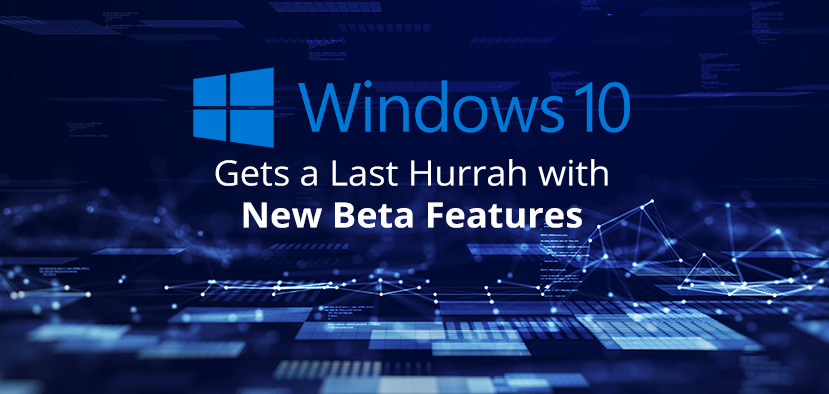Windows 10 Gets a Last Hurrah with New Beta Features
June 07, 2024
1 min 46 sec read
Microsoft is in redemption mode. After a rocky start with Windows 11, the tech giant is turning its attention back to the beloved Windows 10, much to the delight of users worldwide.
Despite Windows 10 support officially ending in October 2025, Microsoft has taken the surprising step of reopening its beta program to test new features and improvements for the older OS.

This revival isn't just a last-minute patch job. Microsoft recently introduced the AI Copilot feature to Windows 10, initially exclusive to Windows 11. And more enhancements might be on the way. "To bring new features and more improvements to Windows 10 as needed, we need a place to do active feature development with Windows Insiders," explained the Windows Insider team in a blog post. Hence, they've reopened the Beta Channel for Windows Insiders using Windows 10.
The specifics of what new features are coming remain under wraps. However, Windows Insiders can opt into the beta channel to get early access to these updates. Microsoft emphasized that the end-of-support date of October 14, 2025, remains unchanged. "Joining the Beta Channel on your Windows 10 PC does not change that," the company reassured users.
This move is a notable shift from last year when Microsoft declared it was done with major updates for Windows 10. Now, the company aims to squeeze every bit of value from the current Windows 10 PCs. Once support ends, consumers will be offered paid security updates for the first time, a measure previously announced for businesses at a steep price. Businesses will pay $61 per device for the first year of updates, with the fee doubling each subsequent year. Pricing for consumer updates is still under wraps.
Meanwhile, Microsoft continues its push for Windows 11 upgrades. However, the transition has been bumpy due to the new OS's stringent hardware requirements, which many existing PCs don't meet. Windows 11 only supports CPUs released from 2018 onward and devices equipped with TPM security chips. This has left many users stranded on Windows 10.
Windows 11's adoption rate reflects this struggle. As of May 2024, StatCounter reported that Windows 11 held nearly 28 percent of the Windows market share, while Windows 10 maintained a strong lead at 68 percent, nearly nine years after its release in 2015.
In this phase of Microsoft's ongoing saga, it's clear they are committed to enhancing user experience, even as the clock ticks down on Windows 10. Whether this strategy will smooth the path to Windows 11 or simply extend the life of Windows 10 remains to be seen, but for now, Windows 10 users can look forward to some exciting updates before the final curtain falls.
Want to read this in Spanish?
Spanish Version >>
